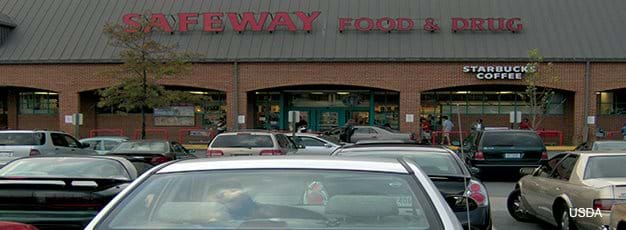Strong Competition in Food Retailing Despite Consolidation

In the late 1990s, a number of leading grocery retailers went on a buying spree. Between 1997 and 2000, more than 4,100 stores were acquired, amounting to almost a fifth of all U.S. supermarkets. Mergers and acquisitions by large grocery retailers, including Kroger, Albertson’s, Ahold USA, and Safeway, produced a significant increase in the share of grocery store sales by the largest firms. By 2005, the 20 largest retailers accounted for 61.6 percent of total U.S. grocery store sales, up from 40.6 percent in 1995.
This increase in concentration—the share of sales held by the largest firms—has raised concerns about the level of competition and its impact on consumers, agricultural producers, and food processors. Fears about rising food prices have not been borne out, however. According to the Bureau of Labor Statistics, at-home food prices rose slightly less than overall prices during 1995-2005. Federal antitrust regulations may have had a role in keeping prices competitive. When a merger or acquisition eliminates a competitor in a market area, the merging retailers must often divest a certain number of stores, typically selling them to a food retailing competitor. For example, the merger of Albertson’s and American Stores (Jewel, Acme, and Lucky banners) in 1998 required the sale of 144 supermarkets in 57 cities and towns.
Meanwhile, the growth of food offerings by nonfoodstore retailers—supercenters, warehouse club stores, mass merchandisers, and dollar stores—with their price-oriented focus and greater general merchandise mix, has provided additional competition in retail food markets and helped to hold down at-home food prices. By 2005, food sales by nonfoodstore retailers amounted to 31.6 percent of the $518.7 billion in retail food sales, up from 16 percent in 1995.
In response, consolidating retailers are striving to improve procurement and operating efficiencies by introducing new information technologies and supply chain initiatives. They are aiming to lower procurement costs by aggregating purchases by different regions or divisions into a few large buying offices, counting on large volume discounts from agricultural suppliers and processors.
Researchers are also investigating other potential effects of rising retail food concentration. For example, some agricultural producers have raised concerns about fewer but larger retail buyers for their products. Fresh fruit and vegetable grower-shippers have questioned whether marketing practices with retailers favor large buyers, resulting in lower prices received. An ERS study of fresh fruit and vegetable prices found mixed evidence across the commodities studied.
Retailing & Wholesaling, by Anne Byrne and Eliana Zeballos , USDA, Economic Research Service, November 2023
U.S. Fresh Produce Markets: Marketing Channels, Trade Practices, and Retail Pricing Behavior, by Carolyn Dimitri, Abebayehu Tegene, and Phillip Kaufman, USDA, Economic Research Service, September 2003


